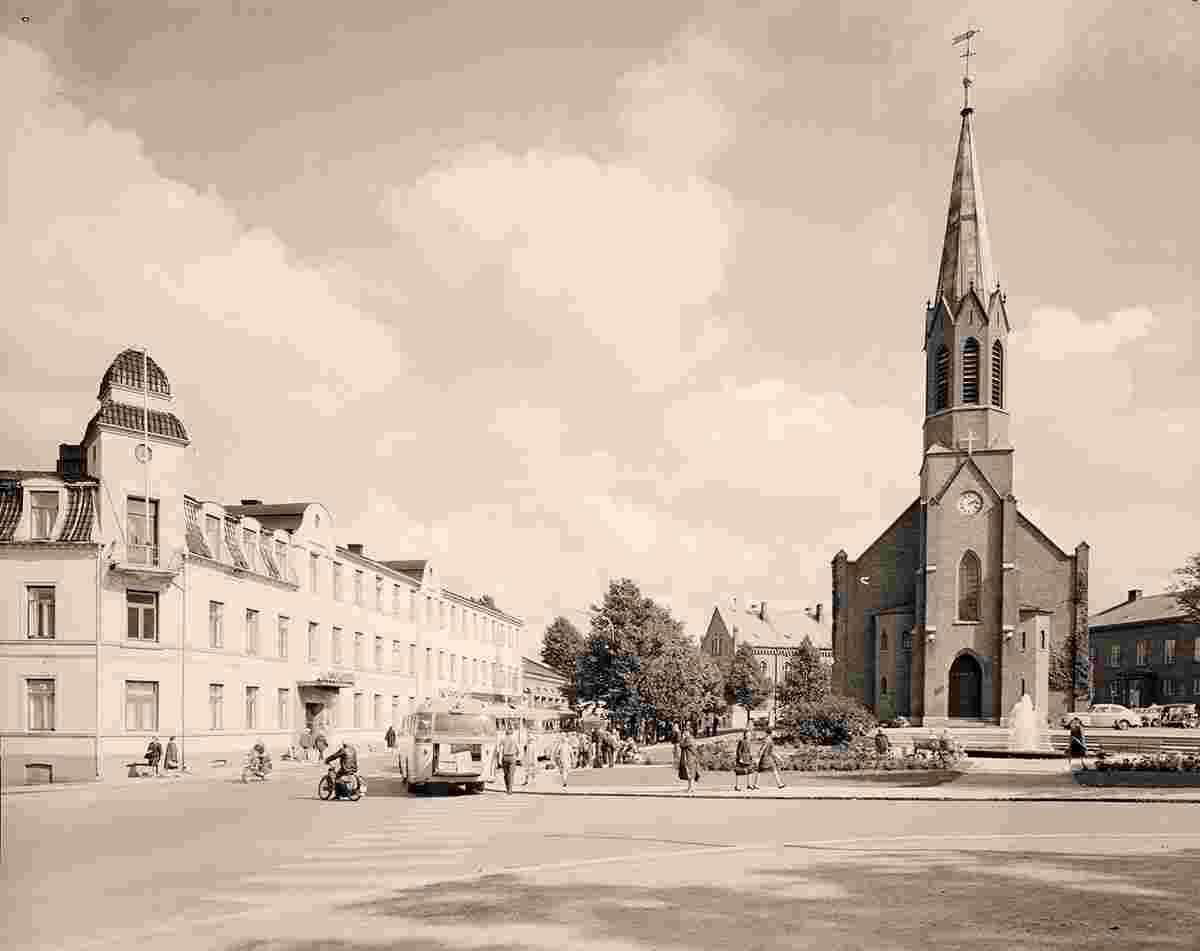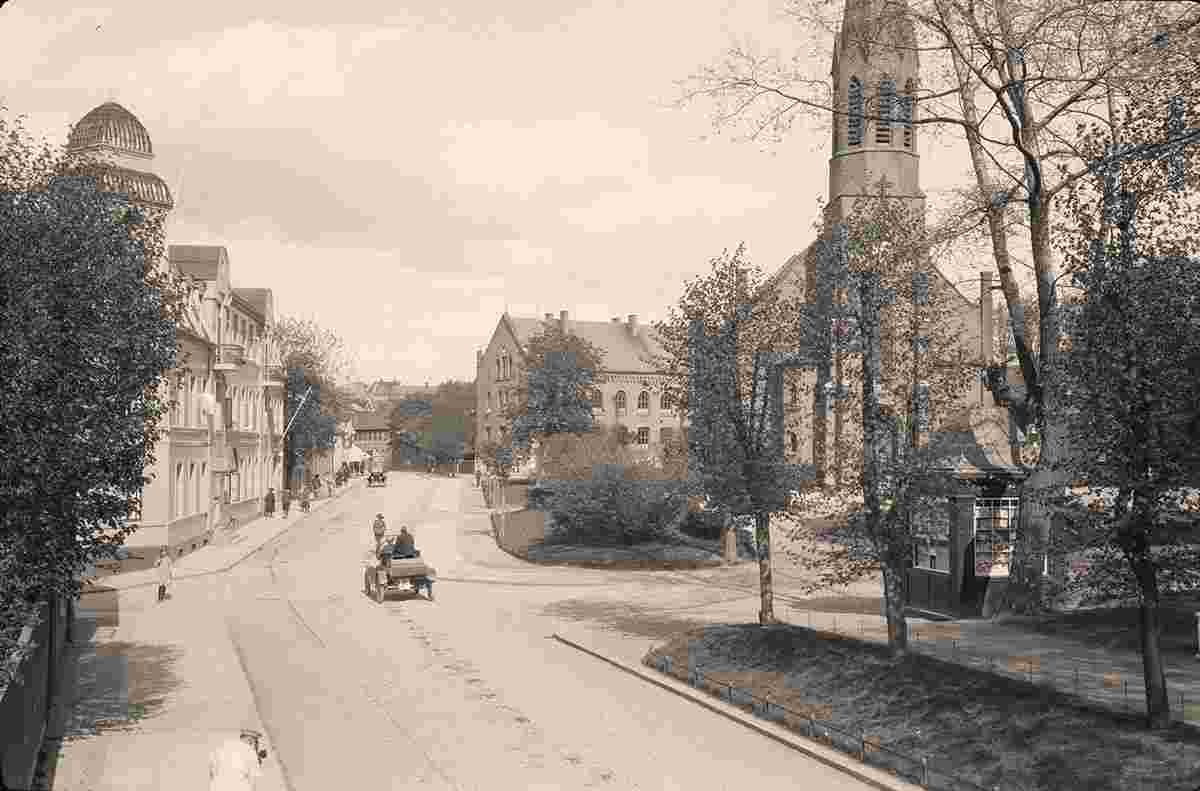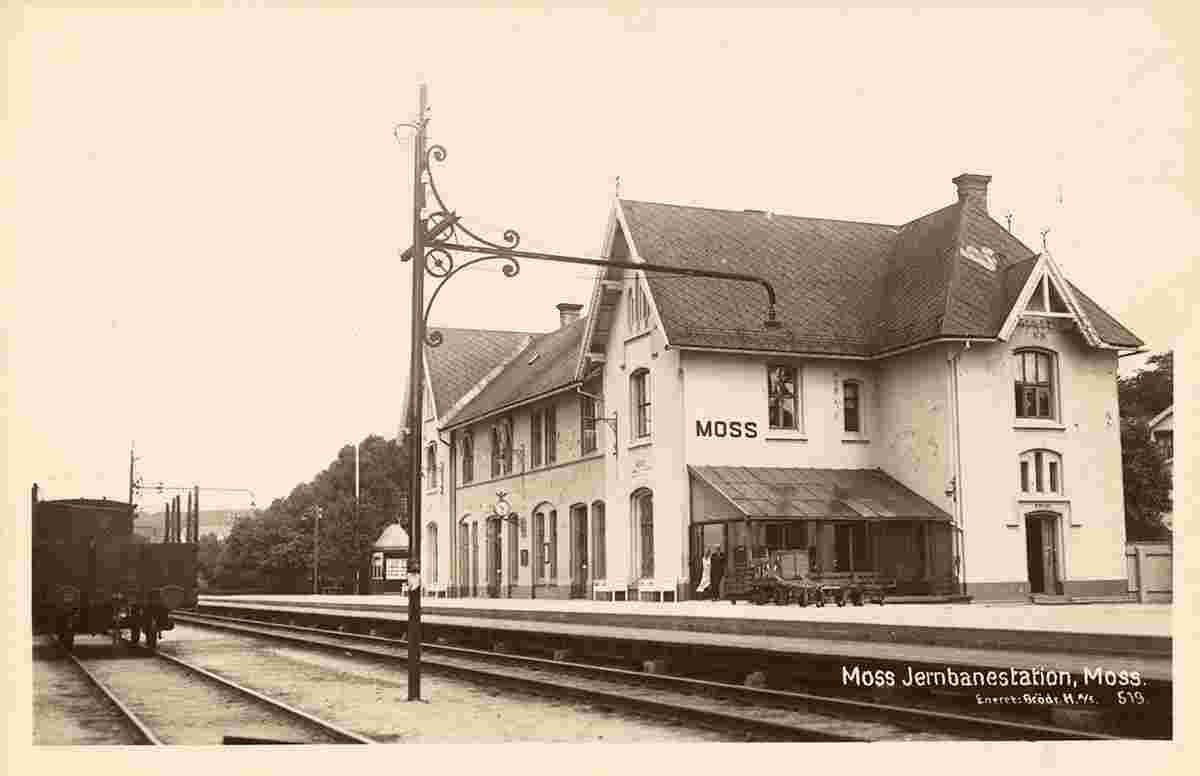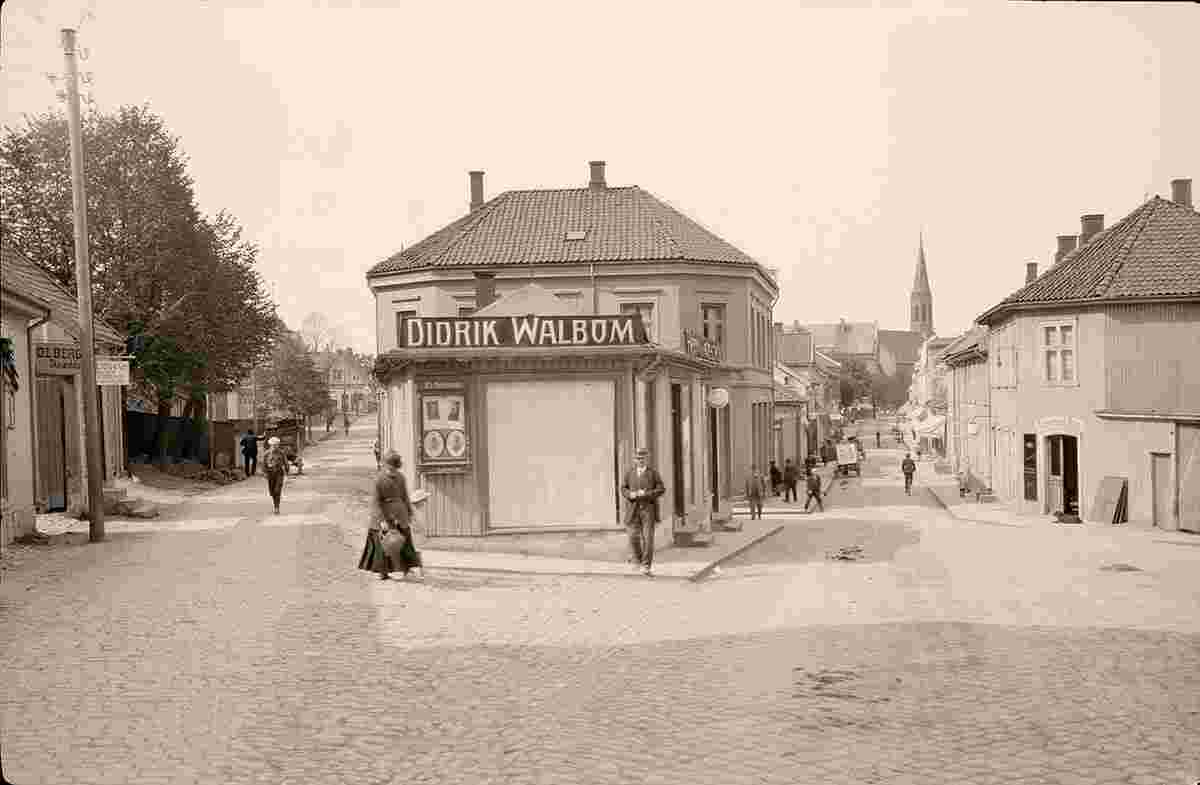Historical and old photos of Moss, Viken
HistoryArcheological finds suggest that there were settlements in the area more than 7,000 years ago and continuously through the Iron Age, Viking Age, through to modern times. During the Viking era, the place was known as Varna (forne, vorne, front-protection?) and was the site of a cooperative for battleships held by local warlords on behalf of the king. The first literary reference to the name Mo(u)ſs(ß) is from Bishop Eystein Aslaksson's Red book (NRA AM fol. 328) from 1396, and by then the town had become a commercial center with craftsmen and mills. By the 16th century, the town's port was significant enough to warrant its own customs official. Liquor distilleries became one of the dominant industries, and it was not until 1607, after the Reformation, that the town got its own church. By 1700, Moss had become a hub for both ship and land traffic between Copenhagen and Christiania, and in 1704 Moss Jernverk (Moss Ironworks) was established just north of the city center. By 1720 it received its charter as a merchant town, with its own official. This may have had background in an important battle in 1716 that was fought in the town square in Moss in which Norwegian troops commanded by Vincent Budde prevailed over invading Swedish forces, sent by Charles XII to capture Akershus Fortress. In 1767 a local resident built a "pleasure pavilion" near the town, which survives as the Hotel Refsnes Gods. In 1814, Moss became the site for the signing of the Convention of Moss, which effectively put an end to the Dano-Norwegian kingdom. This set the stage for economic development that has persisted to this day. On the morning of 14 July 2006, a bolide exploded above the nearby town of Rygge - moments later, several stony meteorites fell over Moss. A number of meteorites were recovered by local residents and visiting meteorite hunters, which after analysis and classification, were found to be a rare type of carbonaceous chondrite. Norwegian lady statuesMoss and Virginia Beach, Virginia in the United States are sister cities. On Good Friday, 27 March 1891, the Norwegian bark Dictator, whose home port was Moss, was lost in the treacherous waters of the Graveyard of the Atlantic. The ship had been en route to England from Pensacola, Florida with a cargo of Georgia Pine lumber. After being caught and disabled in a storm, she was headed for port at Hampton Roads, Virginia to make repairs when she encountered another storm just off Virginia Beach. Working in the high winds and seas, lifesaving crews from shore were able to save some of the 17 persons aboard. However, the pregnant wife of Captain J.M. Jorgensen, Johanne, and their 4-year-old son Carl were among the 7 persons who drowned. The ship's wooden female figurehead had washed ashore. It was placed in a vertical position facing the ocean near the boardwalk as a memorial to those who lost their lives in the shipwreck. It was a landmark there for more than 60 years, but gradually became weathered and eroded. In 1962, Norwegian sculptor Ørnulf Bast was commissioned to create two nine-foot bronze replicas of the original figurehead by the City of Moss. The Norwegian Lady Statues were unveiled on 22 September 1962. One was presented as a gift to Virginia Beach, and an exact duplicate was erected in Moss to unite the two sister cities. Each statue gives the appearance of facing the other across the Atlantic Ocean. On 13 October 1995, Queen Sonja of Norway visited the Norwegian Lady statue in Virginia Beach, and placed memorial flowers. Origin: en.wikipedia.org | ||||||||||||
 |
Historical and old photos of Moss, Viken
Historiske og gamle bilder av Moss, Viken |
| Main page • Countries of Europa • Cities of Norway |
| Robinson Rd, CB 13862 Nassau, NP, The Bahamas |







